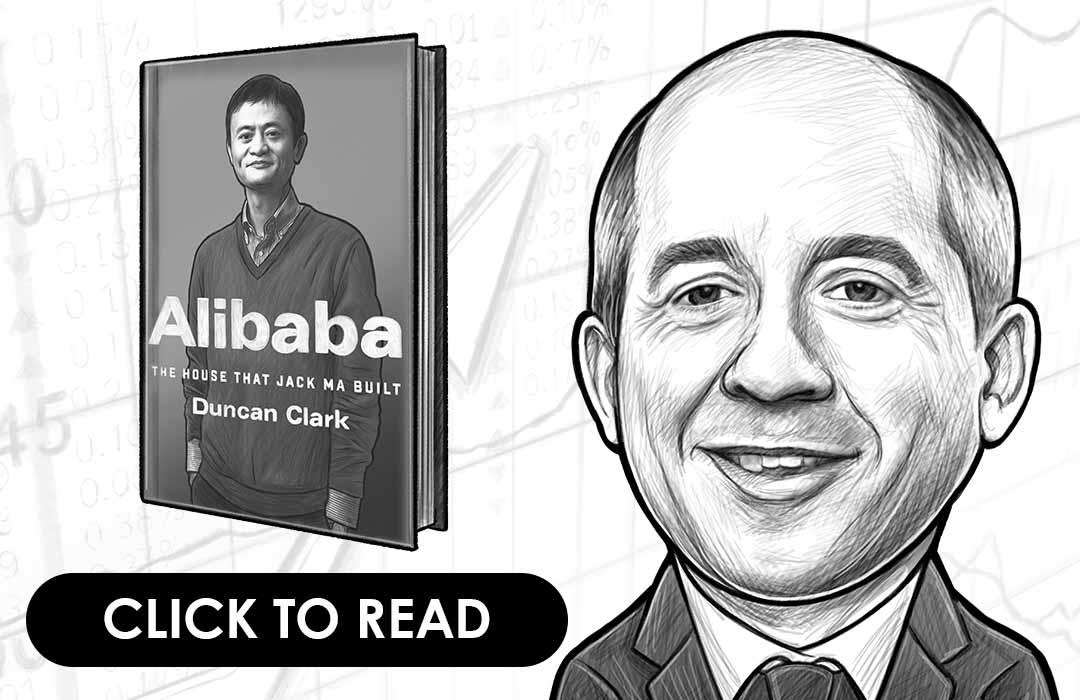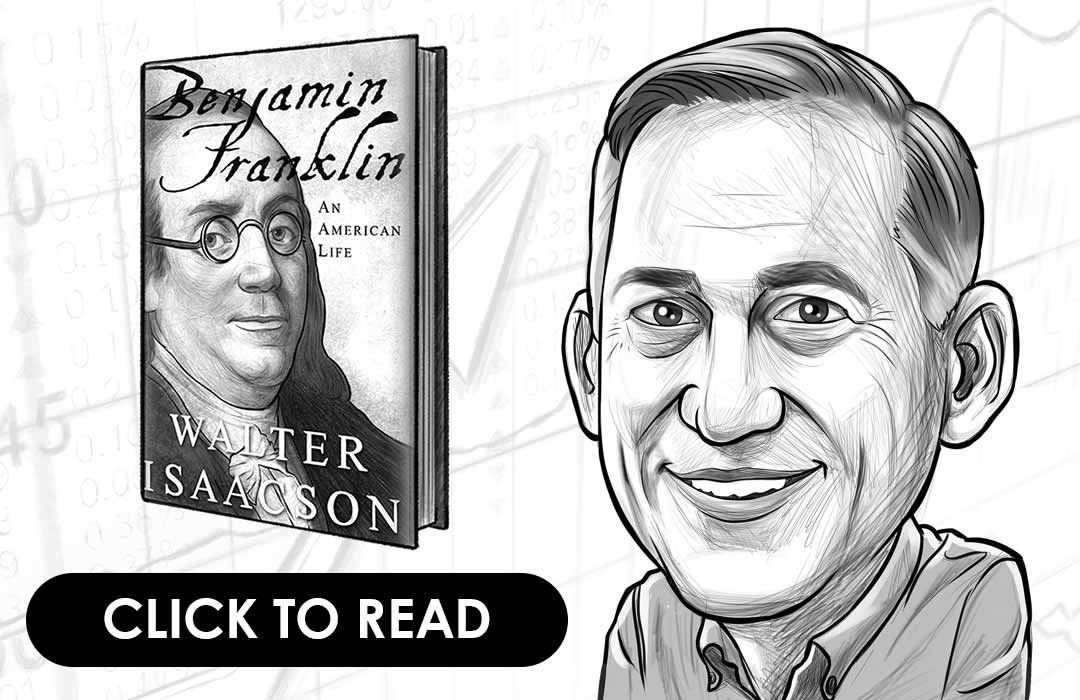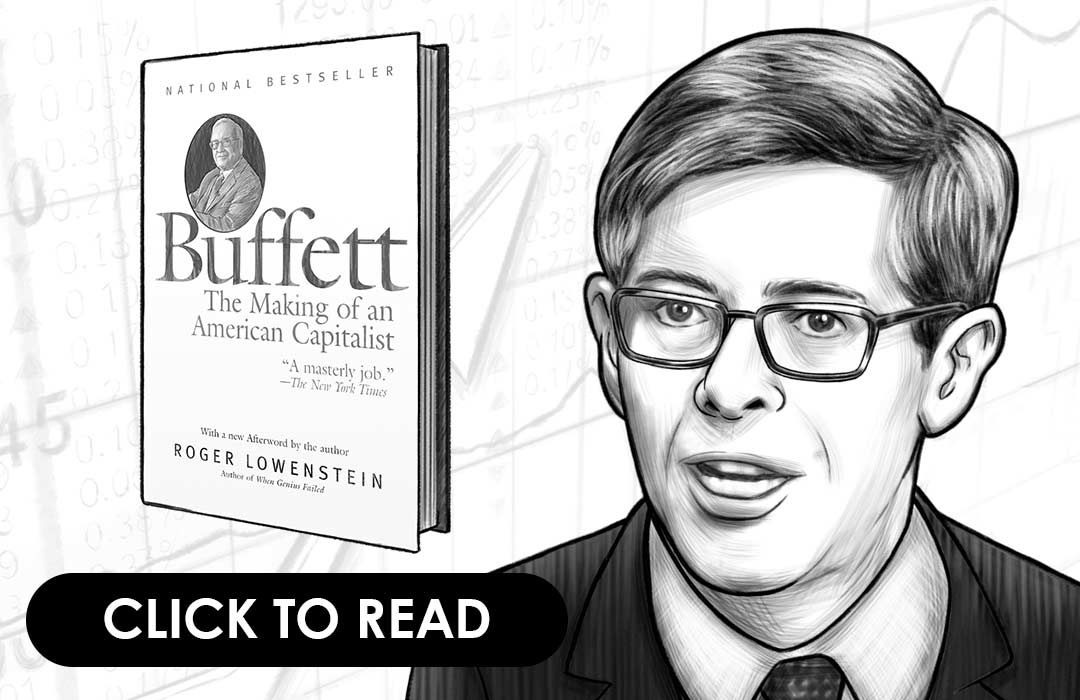An Executive Summary Of The Outsiders
Eight Unconventional CEOs And Their Radically Rational Blueprint For Success By William Thorndike
WHO IS WILLIAM THORNDIKE?
William Thorndike received his MBA from Stanford University. He also graduated from Harvard and went on to become a founding Partner at Housatonic Partners, which was established in 1994. Since 1995, Thorndike serves as the MD at Housatonic, and also works at Bartley Capital, LLC. Read on to know more about what makes CEOs tick in this book: The Outsiders.
PRESTON AND STIG’S GENERAL THOUGHTS ON THE OUTSIDERS BOOK
After reading a lot of books about capital allocations and just as many books about leadership, it’s interesting to find a book that combines the two. Instead of looking at each individual CEO in this book I think it’s profound what the common characteristics are across the board.
One thing I’d like to highlight is their ability to think like an owner and not as a CEO. By that, I mean they always think about what is best in the long term for the individual shareholder, and not caring about what the media says, or Wall Street expectations. All of the CEOs have been asset and resources allocators and they focused on this key question: How can each dollar best be put into use? Although that might seem like an obvious question for any CEO to ask, the individuals highlighted in this book, often thought outside the book and considered non-operational subsidiaries in any of their opportunity costs. The 8 people in this book have for decades not just talked about, but acted on it every day. It’s safe to say that both investors and leaders can grow their competence to a new level after reading this book.
Understand the financial markets
in just a few minutes.
Get the daily email that makes understanding the financial markets
easy and enjoyable, for free.
CHAPTER 1: A PERPETUAL MOTION MACHINE FOR RETURNS
The rivalry between CBS and Capital Cities Broadcasting was legendary when Tom Murphy stepped in as the CEO to serve Capital Cities in 1966. While CBS was enormously successful – run by Bill Paley – with radio and TV stations in some of the largest markets, Capital Cities, in contrast, was small with only five TV and four radio stations that were in smaller markets. However, later, as the world took note, Capital Cities grew to such an extent that it was three times more valuable than
CBS. So, how did this happen? Well, it was simple. Both the CEOs had different management approaches. CBS focused on acquisitions and used their cash flow to enter various fields such as the toy industry. They also issued stock to fund the acquisitions and spent enormous sums of money in developing corporate structures and hiring too many employees. In simple terms, they sought to expand. On the other hand, Tom Murphy, aided by his trusted COO, Dan Burke, shunned diversification and focused on media businesses he knew well.
Yes, Murphy did expand by acquiring more TV and radio stations including the ABC network for $3.5 billion in 1986. But, they stuck to a plan and concentrated more on cutting costs by eliminating redundant positions and unnecessary perks. They excelled at operations and capital allocation to a stunning degree. When Murphy turned 70, he negotiated a deal with Eisner from Disney to leave a whopping $19 billion for his valuable shareholders. At the end of his regime that lasted for 29 years, he had accomplished four times more than any of his peers.
CHAPTER 2: AN UNCONVENTIONAL CONGLOMERATE
Henry Singleton – the man who founded Teledyne along with George Kozmetzky – did not believe in conventional methods. However, he delivered outstanding results. From 1963 to 1990, the company offered an enormous 20.4% annual return to the shareholders, which meant that if you had invested a dollar with Singleton in 1963, it would be worth $180.94 in 1990!
The secret of Singleton’s success was that he focused solely on capital allocation and adapted to changing markets continuously. Using Teledyne’s stock, he bought about 130 companies that were profitable with leading positions. In 1967, Singleton bought Vasco Metals for a massive $43 million. A short while later, he stopped acquitting companies once the acquisition prices rose and his stock multiples began to fall.
After that point, Singleton ensured that Teledyne never engaged in acquisitions and also stopped issuing stock. Within Teledyne’s first ten years operating as a public company, their EPS had grown sixty-four‐fold, and the shareholders made humongous profits.
What made Singleton so successful is that he eschewed concepts such as “synergy” and “integration,” but instead focused on extreme decentralization where he, along with Roberts, broke the company into smaller components and emphasized on managerial responsibility and accountability. As a conglomerate, Teledyne operated in a far different way than its competitors.
CHAPTER 3: THE TURNAROUND
When the Berlin Wall collapsed in 1989, many companies scrambled to save themselves. General Dynamics, in particular, had hit its lowest point with a debt of $600 million and $10 billion in revenue. However, the company did bounce back, thanks to its CEO, Bill Anders. When Anders assumed the position in 1991, he only had ten years of experience in the private sectors, but his actions proved that it’s possible to save struggling companies by making a few changes in a company’s fundamental approaches.
Anders believed that since the defense industry had an excess, they could either grow by acquiring other companies or shrink their existing businesses. His strategy had three key elements, which stated that a) General Dynamics would only operate businesses that held leading market positions b) They would quit commodity businesses with low returns and c) They would only continue with businesses they were good at. Anders ensured that General Dynamics got rid of any businesses that failed to meet these criteria.
Apart from that, Anders also shifted the focus of the company on shareholders who were neglected all the while. Along with Mellor – the COO and president of General Dynamics – Anders replaced 21 top business executives to alter the company’s culture. When Anders took over as the CEO, the company was struggling with a negative cash flow, but it went on to generate $5 billion in just three years! What makes Anders different from other CEOs is that while most companies avoid strategic plants and remain flexible, he stuck to his plan and saw to it that it worked. He also managed the capital and human resources and sold the company’s weaker divisions while building the stronger ones effectively.
CHAPTER 4: VALUE CREATION IN A FAST-MOVING STREAM
When John Malone joined the cable company TCI in 1973, the company was doing well with 600,000 subscribers. However, just after a few months, the industry buckled under new regulations, thereby pushing the stocks down. The company was on the verge of bankruptcy and Malone, along with Bob Magness, spent considerable time dealing with many issues plaguing the company.
Malone salvaged the situation by introducing a new operating and financial discipline that stated that if the managers could grow new subscribers by at least 10% per year, they could work independently. This entrepreneurial culture ensured that while the good managers were recognized, the bad ones were weeded automatically. This also resulted in TCI gaining an edge against other companies, with its highest margins.
Now that Malone could finally implement his strategy, he decided that the best way to create value in the cable business was by maximizing the leverage financially and with the suppliers as well. In other words, this meant that the largest players had the least programming costs that allowed them to increase their cash flow considerably.
With a good cash flow and debt from new lenders, Malone aggressively acquired 482 companies from 1973 to 1989. Over the years, he came up with several strategies that were copied by other companies later. If you invested a dollar in TCI in 1973, it would be over $900 by 1998!
CHAPTER 5: THE WIDOW TAKES THE HELM
After the unexpected suicide of Philip Graham in 1963, Katherine Graham found herself as the CEO of The Washington Post although she hadn’t worked regularly for about 20 years! Nervous and shy, she was now responsible for running a Fortune 500 company with a great reputation. However, that didn’t stop her from delivering an amazing 22.3% annual return to her shareholders when she stepped down from her position in 1993.
Graham familiarized herself with the company for a few years and made her first significant decision of replacing Russ Wiggins, the editor, with Ben Bradlee who worked for the Newsweek. Later, by 1971, she made the company public to raise capital for acquisitions – a decision that was backed by the board. Graham went on to publish a story of the Pentagon Papers even though the Nixon administration was clearly against it, thereby cementing a spectacular reputation for her company.
Graham also oversaw the coverage of the Watergate Scandal that led the company to secure a Pulitzer Prize, placing the Post only second to the New York Times. The turning point of her career arrived when she decided to fight a strike from the union. With significant concessions, the company made more profit and Graham had managed to emerge a winner.
CHAPTER 6: A PUBLIC LBO
Bill Stiritz was selected as the CEO of Ralston Purina when he sent a memo explaining his strategy for the company. Ralston dealt with food products and had its operations ranging from mushroom farms to fast‐food restaurants. Stiritz, having spent 17 years in Ralston already, began restructuring the company by getting rid of businesses that didn’t deliver returns. Ultimately, Ralston was a branded products organization, and Stiritz continued with his unconventional approach that was similar to Warren Buffett’s.
By the 1980s, Stiritz began actively repurchasing stocks after overcoming resistance from the board. He also acquired Continental Baking from ITT to introduce new products and maximize cash flow. After a while, he went on to purchase Union Carbide’s Energizer Battery for $1.5 billion, wasting no time in improving the company’s marketing and products. Stiritz also practiced spin‐offs where a business unit would be separated from the parent company into a different company. The shareholders had the option to sell or hold on to their shares, but this strategy helped the company to defer taxes and focus on improving management incentives.
In a move that would completely transform Ralston, Stiritz negotiated with Nestlé to seal a transaction worth $10.4 billion. Over his period of 19 years as CEO, Stiritz was able to make the stocks soar much beyond anybody could imagine.
CHAPTER 7: OPTIMIZING THE FAMILY FIRM
Dick Smith had to take over General Cinema when his father passed away unexpectedly in 1962. He was 37 years old but continued to serve as the CEO for the next 43 years. His managed capital allocation effectively, but what propelled him to success was also the way he conducted business. Smith encouraged other members and executives to disagree with him if they wanted to, and this environment that persuaded candor not only prevented mistakes but it also made them all feel like they were the owners.
Although General Cinema made handsome profits during the 1960s and 70s, Smith was smart enough to realize that the theater wouldn’t grow indefinitely and started thinking about diversification that offered good returns in the long run. Over the years, Smith made three significant acquisitions that weren’t in the business of theaters.
Smith’s approach was different than his competitors, and he provided a 16.1% annual return for the company’s shareholders – a figure more than GE’s 9.8% in the same period! In other words, if you had invested a dollar in 1962 when Smith took over, it would be $684 at the end, but when invested in GE, it would only be $60!
CHAPTER 8: THE INVESTOR AS CEO
When Warren Buffett – a 35-year‐old nobody – took over Berkshire, he, unlike other businesspeople, did it only after becoming friends with the Chace family. In addition, he didn’t borrow debt to acquire the business. He bought his first ever share for $7, but today, it trades for a humongous $120,000! So, how did he achieve this feat?
As a follower of Benjamin Graham, Buffett only invested in companies that offered a good margin of safety, but he also made significant investments in Disney and American Express even though they didn’t fit Graham’s criteria. After Buffett took over Berkshire Hathaway in 1965, he did a great job until 1969, but like Singleton, he suddenly stopped buying anything since the prices were just too high. He also began associating himself with Charlie Munger who later became the vice‐chairman of the company.
Buffett, along with Munger, altered his views on investing and began to look for branded companies. Additionally, he only focused on long-term prospects that multiplied the investments significantly. By 1986, he made a $500 million investment to help his friend, Tom Murphy, acquire ABC. To put it simply, Buffett’s success stemmed from his approach that concentrated on capital allocation, capital generation, and operation management.
Understand the financial markets
in just a few minutes.
Get the daily email that makes understanding the financial markets
easy and enjoyable, for free.
CHAPTER 9: RADICAL RATIONALITY
When you compare the returns of those achieved by S&P, industry peers and Jack Welch against the 8 Outsiders mentioned in the book, the numbers speak for themselves. Upon closer inspection, it’s apparent that the 8 CEOs had quite a few characteristics in common, and this undoubtedly propelled them to such heights.
First off, the Outsiders relied on numbers before they even made a move. The returns were always of paramount importance to them, and they only went forward with companies that offered compelling returns. Secondly, they were keen on increasing the value per share by managing the denominator, and they achieved this by repurchasing shares and investing money carefully. Thirdly, unlike other CEOs, these CEOs rarely bothered about spending time on investor relations.
Most importantly, all these 8 CEOs were only keen on building long-term value, which naturally helped their shareholders ultimately. Needless to say, managers and CEOs of other companies can learn from their strategy and understand the importance of capital allocation to run their businesses efficiently.








